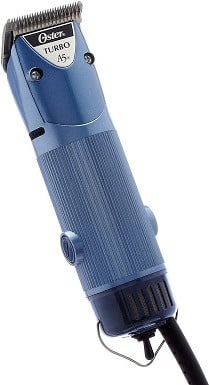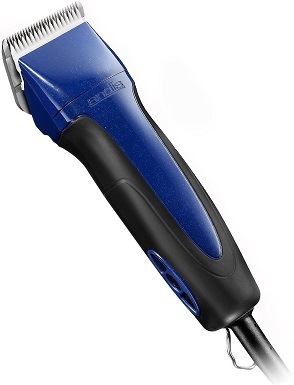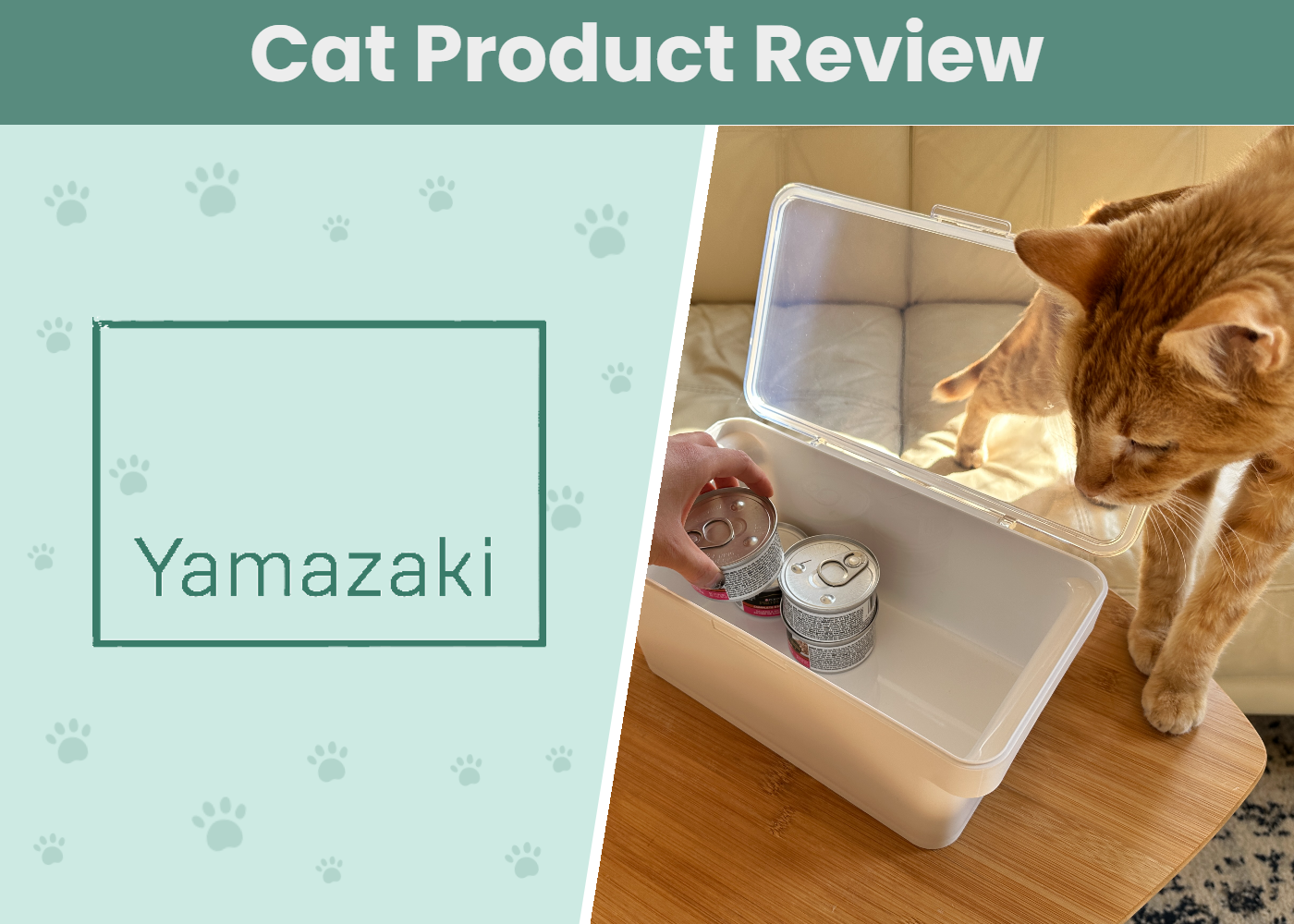
While professional-grade clippers won’t struggle with a Persian’s long fur, they can also be very pricey, so getting the right clipper the first time around will save you time and money. We’ve put together some reviews to help you on your search for the best cat clipper for your Persian.
A Quick Glance at Our Favorites in 2024
| Image | Product | Details | ||
|---|---|---|---|---|
| Best Overall |

|
Wahl Bravura Cordless |
|
CHECK PRICE |
| Best Value |

|
Andis Gentle Groom |
|
CHECK PRICE |
| Premium Choice |

|
Oster Volt Cordless |
|
CHECK PRICE |

|
Andis AGC2 UltraEdge |
|
CHECK PRICE | |

|
Oster A5 Turbo 2-speed Pet Clipper |
|
CHECK PRICE |
The 6 Best Clippers for Persian Cats
1. Wahl Bravura Cordless Cat Clipper – Best Overall

Wahl is a well-known and trusted name in cat grooming, and this clipper will show you why! This is a cordless clipper kit that allows you a lot of freedom to move around your Persian when grooming. The battery keeps its charge for plenty of time to get through your grooming session, so you won’t have to scramble to find the charger while you work. You can also use this while plugged in if desired.
It features Wahls signature 5-in-1 blade which is great for length adjustments, and the included length guides will make your trimming quick and easy. The blade is small and versatile, and it’s not overly noisy, so your cat is less likely to be afraid of it. The blades did get a little warm during use, and cutting is noticeably slower on the lower settings, but it did get through our Persian’s fur.
There’s also little indication as to what length setting the bare clipper is on, so you’ll have to familiarize yourself with the adjustments before you get your cut just right. This clipper conveniently includes a soft case for storage.
- Cordless for mobility
- Long-lasting battery
- Can be used while plugged in
- Allows for five smaller adjustments
- Includes guides for different lengths
- Quiet during use
- Includes case
- Blades get warm during use
- No length indication for micro-adjustments
2. Andis Gentle Groom Adjustable Blade Cat Clipper – Best Value

If you’re looking to save some money but want a clipper that will still provide a lot of power, this option from Andis is for you. This clipper is corded, so you will need to maneuver the cord around your cat while you work, which can be a bit frustrating. It features fine adjustments and comes with four guides for varying length cuts, making this a great option for your Persian’s long hair. This clipper is relatively quiet during use, so your cat won’t want to run from the noise.
It’s made to work best with fine fur, so it’s a great option for Persians, but it did seem to struggle a bit to get through the thickest parts of our cat’s fur. The blade doesn’t get hot even with extended use. There aren’t replacement blades available, so if you do ever need to replace it, you’ll have to buy a new clipper.
The fact that these are corded and slightly underpowered kept them out of our number one spot. However, especially given the very reasonable price tag and great performance, we believe these are the best clippers for Persian cats for the money.
- Very affordable
- Features micro adjustments
- Includes four length guides
- Quiet during use
- Made for fine fur
- Doesn’t get hot with use
- Corded power supply
- Struggles a bit with thick patches of fur
- No replacement blades available
3. Oster Volt Cordless Pet Clipper – Premium Choice

If you’re willing to pay whatever it takes to keep your Persian’s coat in tip-top shape, this may be the grooming tool you’ve been looking for. This is another cordless clipper that runs on a powerful and long-lasting battery. It seems to last even beyond the two hours it’s rated for, so the fact that this comes with only one battery isn’t the worst news! This is a very powerful clipper that will easily move through your Persian’s fur, and it doesn’t get hot during use.
This clipper doesn’t include or use guides for different lengths, so you’ll have to purchase and swap out blades for varying cuts if needed. This clipper is a little bit noisier than our number one and number two spots, so this — in addition to the larger price tag — keeps it out of our top two picks.
- Cordless
- Very long battery life
- Extremely powerful
- Doesn’t get hot during use
- No blade guides included
- Blades must be manually swapped out
- Somewhat noisy
- Expensive
4. Andis AGC2 UltraEdge 2-Speed Cat Clipper

Another corded clipper on our list, this one supplies a hefty amount of power that will make short work of your cat’s grooming. The 14-inch cord is nice, but of course, these are less convenient and maneuverable than cordless options.
The motor has two speeds that provide power when you need it and cooler operation when you don’t. However, even in the lower setting, we found the blade getting rather hot. Operation is also noisy, so these can spook your Persian and make grooming time a bit more difficult for you. This clipper is compatible with a few different blades. However, it only comes with one, and swapping out blades is fairly time-consuming, especially if you’re in the middle of a grooming session.
- Very powerful
- Uses a two-speed motor
- Compatible with multiple types of blade
- Corded power supply
- Blades get hot rather easily
- Noisy during use
- Only includes one blade
- Changing blades is time-consuming
5. Oster A5 Turbo 2-speed Pet Clipper

This is a corded clipper, so maneuvering the cord around your cat while grooming can be a bit frustrating. This has a two-speed motor to help prevent it from getting hot, but we still found both the blade and the unit itself getting hot very quickly. They do supply a lot of power, so getting through your Persian’s thick fur won’t give you much of a problem.
This clipper only comes with one blade that’s best for your cat’s paws, face, and bottom, so you may need to invest in some additional blades for cuts of other lengths. It’s compatible with all A5 blades, but swapping them out can be a bit of a pain, and this clipper doesn’t come with any length guides. The clipper is also rather bulky and can be difficult to hold, making precision grooming more difficult. Lastly, this clipper is fairly quiet during use, so the noise is unlikely to cut your grooming session short.
- Very powerful
- Two-speed motor
- Quiet during use
- Corded power supply
- Gets hot during use
- Only comes with one blade
- Swapping blades can be time-consuming
- Bulky design
6. Andis Excel 5-Speed Detachable Blade Pet Clipper

This corded clipper is very powerful and will give you no trouble getting through your Persian’s thick hair. It boasts a five-speed motor to help optimize power and efficiency. It includes a 14-inch cord, but it’s of course not as easy to use as a cordless clipper. The blade has a ceramic edge to keep it running cool, but we found that this clipper got very hot during use even when on lower power settings. To keep your pet safe, you will want to take breaks throughout grooming to let the blades cool, which is very frustrating.
The clipper only comes with one blade that can be manually swapped out, and it doesn’t include any length guides. You’ll likely want to purchase guides separately, but for the price, we had hoped this clipper would come with length options. This clipper also produced quite a bit of buzzing noise during use, so your cat may be scared during grooming.
- Very powerful
- Five-speed motor
- Corded power supply
- Blade gets very hot during use
- Requires breaks in grooming to cool
- Only includes one blade and no length guides
- Noisy during operation
- Expensive
Buyer’s Guide: Finding the Best Clippers for Persian Cats
Whether you’re looking for a clipper to keep your Persian looking trimmed in between trips to the groomer, or you’re looking to be your cat’s groomer yourself, finding a clipper that will work on your Persian’s long, thick fur will require you to be on the lookout for a few key features.
Power
First, you need a clipper that is powerful enough to get through your cat’s fur. Most cats don’t have the long, luxurious fur that your Persian has, so an average clipper probably won’t cut it — literally. To ensure you’re getting a clipper that can breeze through thick fur with ease, you’ll want to look for one with an above-average SPM (strokes per minute). You don’t simply want to search for the highest rating you can find, though.
Temperature
The reason for this is that a higher SPM also means more friction in the blades, which can cause your clipper to get hot during use. There are other things at play here, so regardless of the SPM, you want to be sure to get a clipper that stays cool while you’re grooming. Although some warmth in the unit can be a minor inconvenience for you, a hot blade can be very uncomfortable and even dangerous when it comes in contact with your cat.
A clipper that doesn’t get hot is essential. If you do end up with a clipper that heats up quickly, you’ll have to take breaks to let it cool. This is time-consuming and very frustrating, so you’ll want to avoid it at all costs.
Noise
All clippers buzz, but some make more noise than others. Some buzzing may again seem like a minor issue for you, but your cat won’t know that the clipper is harmless. Loud noises coming from your clipper can easily scare your cat, which can lead to a very difficult grooming session punctuated by chasing your cat around the house. If they’re too loud, your cat is likely to try to escape. The clipper you choose should produce as little noise as possible to keep you and your cat safe and to reduce the fear and anxiety that can come along with grooming.
Add-ons
You will also want to pay attention to how adaptable a clipper is to different fur lengths. A close-cut may be fine around your Persian’s paws and face, but a longer blade or blade guard will help keep that long, beautiful fur everywhere else. Many clippers come with additional blades or guards for altered lengths, and you may find yourself purchasing additional products if your clipper doesn’t include these add-ons.
Cords vs Batteries
Last, but definitely not least, you need to consider which charging option is right for you. There are corded and cordless options available, and each comes with its own pros and cons. Corded clippers of course never run out of battery, and they tend to be cheaper if all other features are identical. However, grooming your Persian may be difficult enough without having to maneuver a long wire around your cat as well.
Cordless clippers can provide stress-free grooming and always leave you with a spare hand to hold your cat. They also need to be charged, so if you do decide a cordless clipper is best for you, you need to make sure the battery life is long enough to get the job done. Cheaper batteries are typically less powerful, so make sure your cordless clipper has enough strength to get through your Persian’s long coat.
Conclusion
A cat clipper can make grooming simple or frustratingly difficult, and the difference lies in a handful of different features for both your convenience and your cat’s safety. Our top pick overall is the Wahl Bravura Cordless Cat Clipper. It’s lightweight, easy to maneuver, holds a charge far longer than you’ll need, and is powerful and silent, so your cat will be comfortable sitting through the easiest grooming you’ve ever done.
If you’re looking to save some money but still want a clipper that will get the job done on such thick fur, the Andis Gentle Groom Adjustable Blade Cat Clipper will be kind to your wallet and leave your Persian looking professionally groomed.
Cat clippers may seem like a simple tool, but finding the right model for you that can get through your Persian’s long, thick fur requires a lot of research and consideration. We hope these reviews of our top choices help you find the best cat grooming clippers on the market.
Featured Image Credit: fcatus1, Pixabay
Contents
- A Quick Glance at Our Favorites in 2024
- The 6 Best Clippers for Persian Cats
- 1. Wahl Bravura Cordless Cat Clipper – Best Overall
- 2. Andis Gentle Groom Adjustable Blade Cat Clipper – Best Value
- 3. Oster Volt Cordless Pet Clipper – Premium Choice
- 4. Andis AGC2 UltraEdge 2-Speed Cat Clipper
- 5. Oster A5 Turbo 2-speed Pet Clipper
- 6. Andis Excel 5-Speed Detachable Blade Pet Clipper
- Buyer’s Guide: Finding the Best Clippers for Persian Cats
- Conclusion













